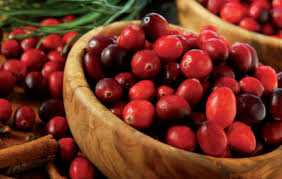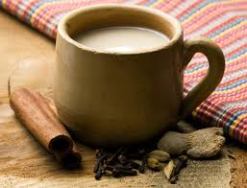 Pumpkin. This delicious winter squash, is not only great for a spooky Halloween decoration, but is bursting with health benefits too.
Pumpkin. This delicious winter squash, is not only great for a spooky Halloween decoration, but is bursting with health benefits too.
Pumpkin’s bright orange colour is due to its beta-carotene content, a provitamin that is converted to vitamin A in the body. Known for its immune-boosting powers, beta-carotene is an antixoxidant essential for eye health and has also been linked to preventing heart disease. Pumpkin is also a rich source of fibre and protein.
It’s not only the sweet orange flesh that has health benefits, the seeds are packed with goodness too. Pumpkin seeds are renowned for their zinc content, an essential mineral for immune health, and men’s health. The seeds also contain the minerals, magnesium and potassium; as well as phytosterols, which can help to maintain healthy cholesterol levels.
Why not try one of these delicious recipes, and make the most out of your Halloween pumpkin…
Pumpkin Pittas
Serves 4
Ingredients
• 1kg pumpkins or butternut squash, deseeded and cut into wedges
• 400g can chickpeas, drained, rinsed and dried
• 1 garlic clove, chopped
• ½ tsp chilli flakes
• 1 tsp ground cumin
• small bunch parsley, roughly chopped
• 2 slices white bread, whizzed to crumbs
For the salad
• 2 carrots, coarsely grated
• ½ small red onion, finely sliced
• 100g feta cheese, crumbled
• 4 wholemeal pitta breads to serve
1. Put the pumpkin in a microwave-safe bowl and cover with cling film. Cook on High for 10 mins or until soft. Tip the chickpeas, garlic, chilli flakes, cumin and half of the parsley into a food processor, then whizz until the chickpeas are finely chopped but not smooth.
2. Allow the pumpkin to cool slightly, then scoop the flesh from the skin and add to the chickpea mix with some seasoning and the breadcrumbs. Give everything a good stir, then shape into 12 little patties with your hands. Put the falafels on a plate and chill for 10 mins.
3. Meanwhile, mix the remaining parsley with the grated carrot, onion and feta cheese, then set aside. Heat the grill to Medium, then cook the falafels on a baking tray for 3-5 mins on each side until golden. Split the pitta breads lengthways and fill with the warm falafels and some of the feta salad.
Pumpkin Soup
Serves 6
Ingredients
• 4 tbsp olive oil
• 2 onions, finely chopped
• 1kg pumpkins or squash (try kabocha), peeled, deseeded and chopped into chunks
• 700ml vegetable stock or chicken stock
• 142ml pot double cream
• 4 slices wholemeal seeded bread
• handful pumpkin seed from a packet
1. Heat 2 tbsp olive oil in a large saucepan, then gently cook 2 finely chopped onions for 5 mins, until soft but not coloured. Add 1kg peeled, deseeded and chopped pumpkin or squash to the pan, then carry on cooking for 8-10 mins, stirring occasionally until it starts to soften and turn golden.
2. Pour 700ml vegetable stock into the pan, then season with salt and pepper. Bring to the boil, then simmer for 10 mins until the squash is very soft. Pour the 142ml pot of double cream into the pan, bring back to the boil, then purée with a hand blender. For an extra-velvety consistency you can now push the soup through a fine sieve into another pan. The soup can now be frozen for up to 2 months.
3. While the soup is cooking, slice the crusts from 4 slices of wholemeal seed bread, then cut the bread into small croutons. Heat the remaining 2 tbsp olive oil in a frying pan, then fry the bread until it starts to become crisp. Add a handful of pumpkin seeds to the pan, then cook for a few mins more until they are toasted. These can be made a day ahead and stored in an airtight container. Reheat the soup if needed, taste for seasoning, then serve scattered with croutons and seeds and drizzled with more olive oil, if you want.
Pumpkin, Lemon & Poppy Seed Loaf Cake
Ingredients
• 225g peeled and deseeded pumpkin or butternut squash, cubed.
• 4 tbsp full cream milk.
• 1 large egg.
• 175g self-raising flour.
• 1/2 tsp baking powder.
• 1/4 tsp bicarbonate of soda.
• 150g caster sugar .
• 1 1/2 tsp mixed spice.
• 1/2 tsp grated nutmeg.
• 50g unsalted butter, cut into small pieces.
• 2 tbsp poppy seeds.
• Grated zest of 1 small lemon.
1. Preheat the oven to 180°C/fan160°C/gas 4. Grease a 900g loaf tin and line with baking paper or greaseproof paper, then grease well once more. Cook the pumpkin in boiling water for 10-15 minutes, until tender. Drain well and leave until the steam dies down, then blend to a smooth purée in a food processor. Scoop into a mixing bowl and mix in 3 tablespoons milk and the egg.
2. Sift the flour, baking powder, bicarbonate of soda, sugar, mixed spice, nutmeg and seasoning into the cleaned bowl of the food processor. Add the butter and process until the mix looks like fine breadcrumbs. Add to the purée and stir until just mixed, adding the remaining milk if the mixture seems dry. Stir in the poppy seeds and grated lemon zest. Spoon the mix into the loaf tin and bake for 45 minutes until well risen and golden.
3. Remove the cake from the tin and cool on a wire rack. Remove the paper and serve cut into slices.





 This week, the weather has suddenly become very chilly. This time of year makes me want to cuddle up on the sofa with a steaming mug of something delicious. However did you know there are many warming brews you could try with added healthy benefits…
This week, the weather has suddenly become very chilly. This time of year makes me want to cuddle up on the sofa with a steaming mug of something delicious. However did you know there are many warming brews you could try with added healthy benefits…